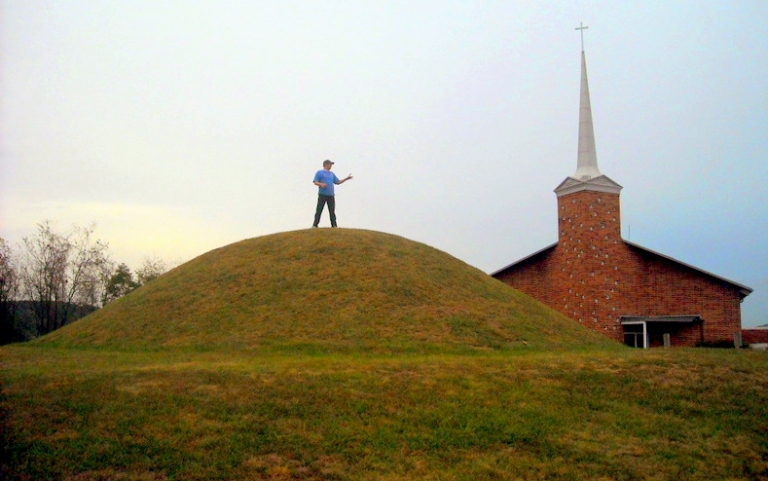
The term “moundbuilder” is often used to describe two ancient cultures that archaeologists now know as the Adena and the Hopewell. These peoples lived in eastern North America from approximately 500 B.C. to A.D. 500. Their monumental earthworks captured the imaginations of explorers and continue to fascinate us today.
Many mounds remain throughout West Virginia and can be found in every county. The largest conical burial mound in the U.S. is, in fact, located in West Virginia.
Here are three facts about moundbuilders in West Virginia that many people don't know.
1. The tallest conical burial mound in the U.S. is in West Virginia
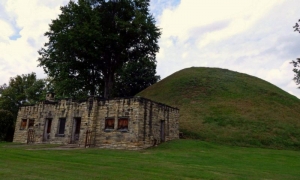
The Grave Creek Mound in Moundsville is believed to have been built around 300 B.C. during what archaeologists call the Early Woodland Period. It was originally at least 70 feet tall and, according to one source, may have required its builders to carry three million baskets of earth.
It was recently explored using non-invasive remote-sensing techniques, including drone photography and ground-penetrating radar. According to archaeologist Alexander Corkum, the first time this method was used in the U.S. was during a pioneering survey at Grave Creek. Another archaeological first for West Virginia! Though it was first employed at Stonehenge, the amazing results were modeled by Jamie Davis and can be seen here.
2. West Virginia played a lead role in modern archaeology
The first Europeans to explore the continent could hardly believe that “savage” Native Americans, as they called them, were responsible for the mounds and earthworks they encountered. So, they proposed extravagant theories about giants, Aztecs, Viking explorers, and lost Hebrew tribes to explain their origins.
Evidence has since discounted their conjectures, though these beliefs proved dangerous to Native Americans. For example, Andrew Jackson used the idea that native peoples had exterminated a once-powerful race to justify racial policies such as the Indian Removal Act. The same pseudo-science is evident today in ancient alien theories, which continue to discount the amazing accomplishments of native people.
Fueled by these controversies, early archaeologists developed scientific techniques that allowed them to answer questions about the moundbuilders conclusively.
Right here in West Virginia, modern archaeology was born during their stratigraphic excavations and through their detailed measurement of mounds, comparisons between ancient and modern artifacts, and big-picture analysis of all earthworks across the continent.
As early as 1894, Cyrus Thomas’s Bureau of Ethnology Report disproved the exotic moundbuilder myths, and archaeologists today still use the 1848 work "Ancient Monuments of the Mississippi Valley" by Edwin Davis and Ephraim Squier as a basis for their understanding of American prehistory.
West Virginia featured prominently in these early works, and its rich archaeological heritage still contributes much to American archaeology.
3. Moundbuilders loved to use exotic materials like copper and mica
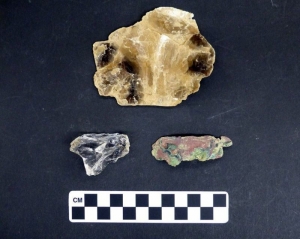
Early archaeologists found amazing artwork and rare materials when they opened some mounds. Both the Adena and Hopewell cultures are known for their statuettes, copper jewelry, elaborate pottery, and delicate mica cutouts.
Some of the materials must have been traded over great distances, which indicates they had a sophisticated economy and were connected with cultures across the continent. The high-quality artwork also shows that their society was wealthy enough to support artists and other specialized craftsmen.
Archaeologists don’t fully understand whether the people buried with these grave goods were political leaders, shamans, or both. It's likely that art and exotic materials were both status symbols and had religious meanings. Copper and mica were difficult to acquire, which would have rendered them desirable “luxuries.” Still, they were also beautiful and reflective, which might have reminded native peoples of the life-giving sun or the mysterious surface of the water.
According to new research by archaeologists at Ball State University, copper was simultaneously desirable for everyday tools and for sacred objects that were gifts from supernatural beings, like the underwater panther depicted in the Panther Petroglyph on display at Tu-Endie-Wei State Park in Point Pleasant.
Want to learn more about moundbuilders? Check out this article in the online West Virginia Encyclopedia, or read archaeologist Darla Spencer’s book, “Woodland Mounds in West Virginia.”
See Also
- Prehistoric Sites in West Virginia
- Some mysterious W.Va. rock features may have sacred origins
- Strange carvings greeted early West Virginia explorers
Rare, mysterious diamond found in 1928 in West Virginia
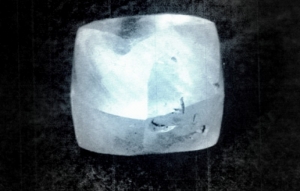
Diamonds don’t exist naturally in West Virginia, yet one of the largest ever found was discovered accidentally in a horseshoe pit in Monroe County in 1928. Geologists are still at a loss to explain how it got here, though speculation has never died down.
The Punch Jones Diamond—also known as the Horseshoe Diamond—remains the largest alluvial diamond ever discovered in North America and the third largest found globally. Read the full story.
Sign up for a FREE copy of West Virginia Explorer Magazine in your weekly email. Sign me up!





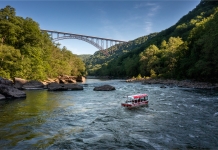
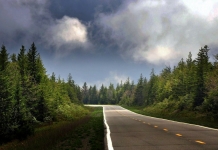
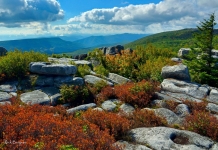
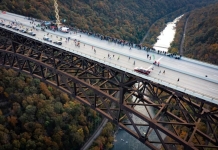


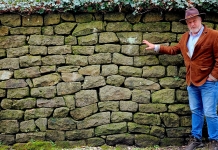
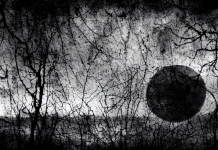

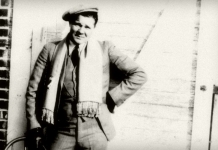
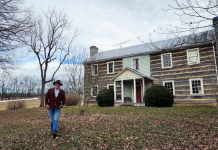
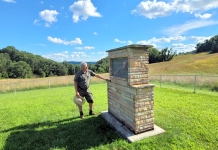








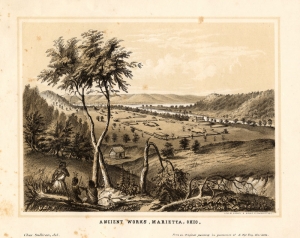
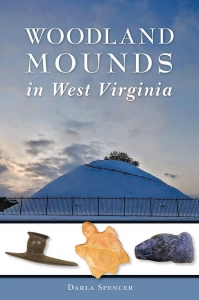




Facebook Comments